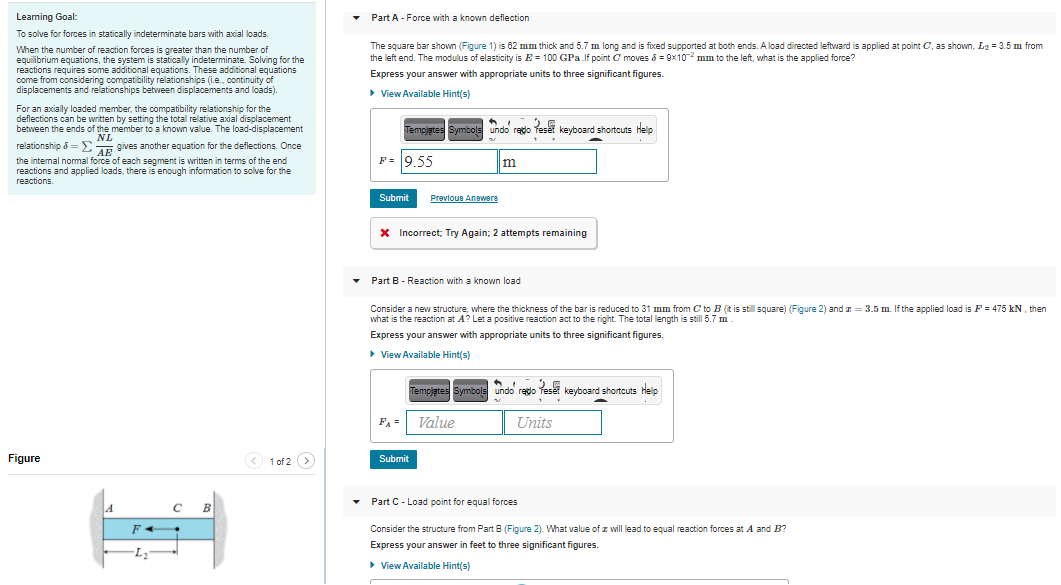
Part A - Force with a known deflection Leaming Goal: To solve for forces in statically indeterminate bars with axial loads. When the number of reaction forces is greater than the number of equilibrium equations, the system is statically indeterminate. Solving for the reactions requires some additional equations. These additional equations come from considering compatibility relationships (i.e.. continuity of displacements and relationships between displacements and loads). For an axially loaded member, the compatibility relationship for the deflections can be written by setting the total relative axial displacement between the ends of the member to a known value. The load-displacement NL relationship 8 = gives another equation for the deflections. Once the internal normal force of each segment is written in terms of the end reactions and applied loads, there is enough information to solve for the reactions. The square bar shown (Figure 1) is 62 mm thick and 5.7 m long and is fixed supported at both ends. A load directed leftward is applied at point C. as shown, L2 = 3.5 m from the left end. The modulus of elasticity is E = 100 GPa If point C moves = 9x10-2 mm to the left, what is the applied force? Express your answer with appropriate units to three significant figures. View Available Hints) Templates Symbols Undo redo Yes keyboard shortcuts Help P = 9.55 Submit Previous Answers X Incorrect, Try Again; 2 attempts remaining Part B - Reaction with a known load Consider a new structure, where the thickness of the bar is reduced to 31 mm from C to B (t is still square) (Figure 2) and I = 3.5 m. If the applied load is F = 475 kN, then what is the reaction at A? Let a positive reaction act to the right. The total length is still 5.7 m Express your answer with appropriate units to three significant figures. View Available Hints) Tempjętes Symbols Undo redo Teset keyboard shortcuts Help FA Value Units Figure < 1 of 2 Submit Part C-Load point for equal forces B F Consider the structure from Part B (Figure 2). What value of z will lead to equal reaction forces at A and B? Express your answer in feet to three significant figures. L ► View Available Hints)
没有找到相关结果